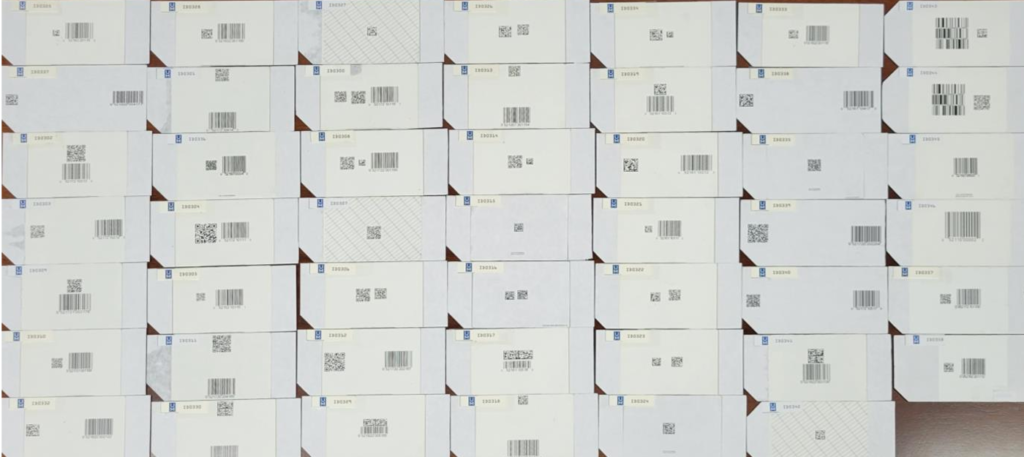
2D Barcode Scanning Test Plan
The University of Memphis test lab was commissioned by GS1 to evaluate varying aspects involving scanning 2D barcodes in retail point-of-sale environments. The initial plan was to provide guidance for all stakeholders to not only prove the viability of the 2D Digital Link barcode but also to identify where/how 2D barcodes would need to be placed during the interim transition period.
By establishing different barcode scanning benchmarks, the testing would provide direction for the following:
- The speed at which different barcodes can be scanned with accuracy.
- The amount and type of encoded data impact accuracy and speed.
- Understanding how scanning systems performed with interim UPC/EAN and QR Code.
- Barcode placement considerations for the interim format include both UPC/EAN and QR Code symbols.
- Impact on performance when different decoding algorithms are turned on.
The test plan consisted of three Tiers of testing and each was performed with a variety of variables changed.
- Tier 1 Baseline Tests: Establish a baseline for single symbols with only a single GTIN
- UPC/EAN, GAS1 Databar Omnidirectional barcodes – benchmark against existing standards
- GS1 DataMatrix and GS1 QR Code
- Data Matrix and QR Code (Digital Link URI syntax with only the GTIN)
2D barcode scanning Tier 1 final results
- Tier 2 tests – Understand how additional data in single barcodes impact scanning performance.
- GS1 Databar Expanded Stacked
- GS1 DataMatrix
- Data Matrix and QR Code (Digital Link URI syntax with only the GTIN)
2D barcode scanning Tier 2 final results (July 2022)
- Tier 3 Tests – Understand how the colocation of multiple barcodes affects scanning performance.
- Colocation of UPC/EAN with one additional barcode (QR Code, Data Matrix)
- Colocation of multiple 2D barcodes with each other
2D barcode scanning Tier 3 final results (December 2022)
As the above information is shared with stakeholders, additional questions and concerns will be collected to drive specific testing.


